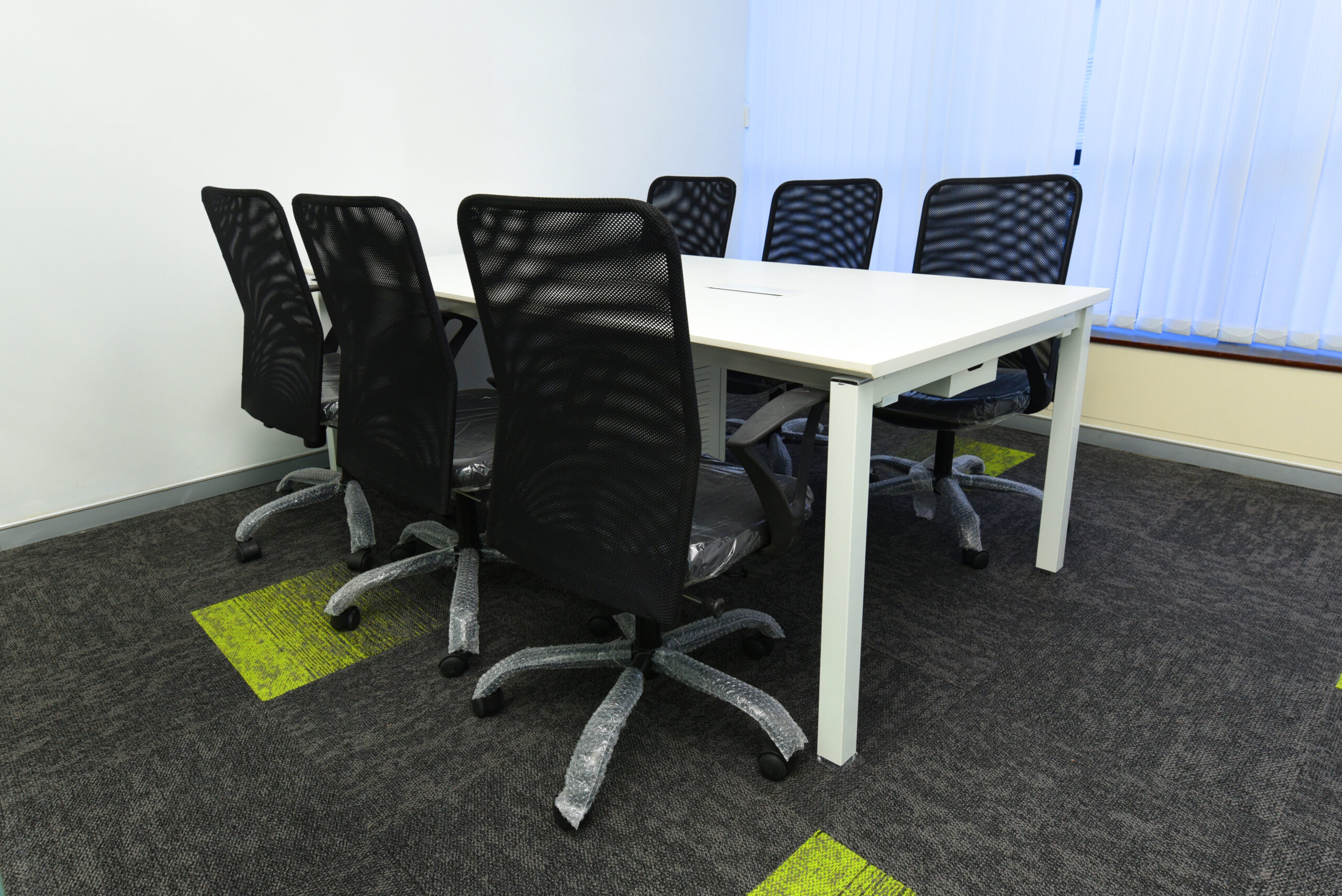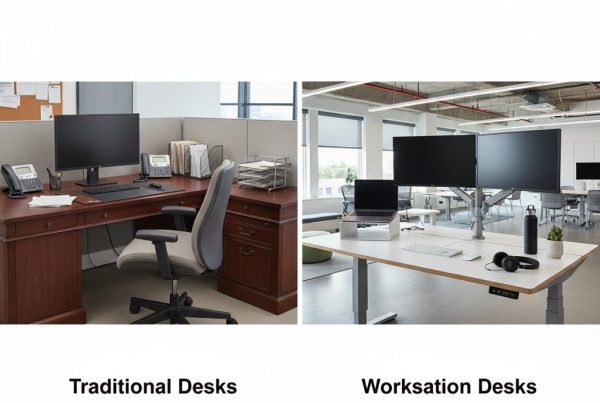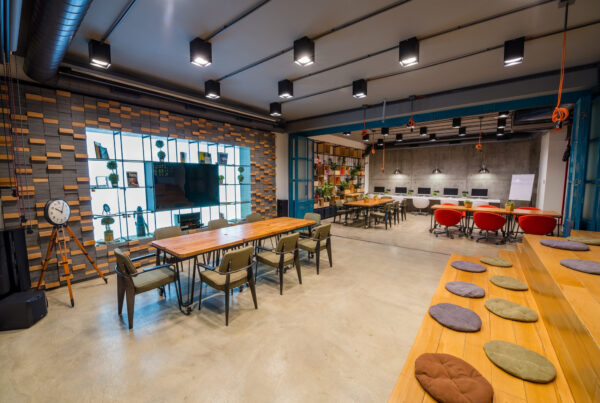A flexible workspace helps you respond to change without disrupting your team’s output. With modular furniture, you get options that adapt to shifting priorities, growth, and different work styles.
Whether you’re managing a corporate office or planning a smaller studio, modular setups give you more control over how your space works. This structure lets you support different tasks across departments without investing in a complete redesign.
Every choice you make while setting up your workspace makes a difference. From workflow analysis to the details of furniture construction, your space can be both functional and adaptable, without sacrificing professionalism or comfort.
In this blog, we’ll explore key aspects of setting up a flexible workspace using modular furniture.
Workspace Setup with Modular Furniture
1. Analyse and Define Your Workspace Needs
Start with a clear assessment of how your team works. Consider the steps below:
- Count how many people use the space now, and plan ahead for the next six to twelve months.
- Are you expecting new hires?
- Will some employees shift to part-time remote work?
Also, ensure that you do not overestimate. Consulting with a modular office furniture manufacturer can help you plan for both current and future needs.
After applying these steps, you can track how work moves through the space. Ask yourself the following questions:
- Who needs quiet for deep focus?
- Who moves around for meetings or collaboration?
- Who needs to shift between the two throughout the day?
Investing in modular systems ensures that your workspace can respond to these evolving dynamics without repeated structural changes.
Segment the workspace into zones based on these functions. Some areas may overlap, but you need to be intentional about where people collaborate, focus, take short breaks, or reset and hold meetings, scheduled or informal.
This will show you where modular pieces are most useful. You’re not just buying furniture; you’re creating a structure that supports productive work with minimal disruption. Partnering with reliable modular office furniture suppliers can give you access to pieces designed specifically for such multitasking zones.
2. Prioritise Ergonomics and Comfort
Flexibility may be in vain if your team isn’t comfortable. Adjustable furniture lets you build flexibility without increasing the risk of fatigue, pain, or distraction.
If you’re aiming to encourage informal discussions and team bonding, modular office seating options can turn unused corners into collaborative hubs.
Focus first on the essentials:
- Desk chairs should support the lower back, offer adjustable seat height, and be made of breathable materials.
- Desks should be height-adjustable, whether operated manually or electrically. Even if only some desks offer sit-stand functionality, employees can gain more control over how they work.
The more employees can control their setup, the more likely they are to stay focused and healthy.
3. Select the Right Modular Furniture Pieces
When designing modular workspaces, be sure to factor in how each piece contributes to comfort and usability throughout the day. Modular furniture only helps if it can shift quickly. Look for pieces that respond to real use.
For workstation desks for offices, find systems that connect or separate with little effort. Avoid office design trends that need tools or full disassembly. The goal is quick change with minimal labour.
Storage is another key point. Use stackable or rolling storage units for offices that also serve as dividers or seating. This reduces clutter without giving up space.
With flexible office space solutions, choose pieces with these features:
- Locking casters for movement and safety.
- Surfaces that clean easily and hold up to frequent use.
- Components that stack, fold, or reconfigure without damage.
Multi-use furniture helps you use every square foot. A bench with built-in storage or a mobile table with power access is a way to build long-term utility into your layout.
Ready to Design a Space That Works Your Way?
Whether it’s reconfigurable desks, multi-use storage, or ergonomic seating, we help you create a modular workspace that adapts effortlessly to your team’s needs.
4. Support Collaboration with Flexible Furniture
Your workspace should allow people to shift smoothly between solo work and collaboration. Modular furniture makes this possible, but only if you set it up with intention.
Desks can be arranged as individual pods or grouped into clusters. Mobile partitions can section off part of the room during deep work hours and be moved aside for team meetings. Rolling whiteboards or flip charts support quick collaboration and also serve as space dividers.
For group work, consider adding the following office layout ideas:
- Movable soft seating in lounge-style setups
- Low tables for informal check-ins or brainstorms
- Modular meeting pods or booths with acoustic features
Give employees control over where and how they meet. These small shifts make it easier for teams to stay connected without disrupting others.
5. Integrate Technology Seamlessly
Cables, chargers, and monitors shouldn’t get in the way. Quality modular furniture should accommodate every plug, wire, and device you use daily. Look for desks and tables with built-in cord management from a trusted office furniture manufacturer. Cable trays, grommets, and integrated ports allow you to power up without clutter.
Set up charging areas in common spaces so devices stay powered without interrupting work. Shared tables with built-in USB outlets are especially useful in meeting zones or breakout areas.
Don’t forget:
- Modular conference room furniture tables with tech access
- Mobile carts for AV equipment
- Privacy screens that also support mounted monitors
Your tech setup should feel invisible. Ensure that it is working through the furniture, not around it.
6. Add Personalisation and Aesthetic Appeal
Flexible, custom modular office furniture should still reflect your culture and values. It means your workspace should feel aligned with how you work and what you stand for.
Use colour with purpose and match your brand palette to soft furnishings or surfaces. Choose finishes that look consistent across modular pieces, even when mixing manufacturers.
For textures, metal, wood, and fabric, can work together if you keep the tone professional and clean. Additionally, use lighting strategically to define zones. Use artwork or greenery to soften meeting areas or quiet rooms. Small choices signal care and professionalism without turning your space into a showroom.
7. Assess and Adjust the Layout as Needed
Build feedback into your setup process. After a few weeks, ask employees what works and what doesn’t. You may begin by finding answers to questions like, do quiet areas stay quiet? Do collaboration spaces get used for actual teamwork? Are people avoiding certain zones?
Once you gather feedback, reconfigure the space. Shift a few desks, move office partitions, or combine or separate workstations as needed, often without requiring a full reset.
Conclusion
A flexible workspace isn’t defined by style alone. It depends on structure, comfort, and control. Modular furniture gives you the tools to adjust your setup as your team shifts, grows, or changes how they work. When you plan office space utilisation with care, from ergonomic support to integrated tech, you build a workspace that stays functional without frequent overhauls.
Stay focused on what your team needs to do their best work. Then choose pieces that let you respond to those needs quickly and clearly.
If you want your workspace to not only look different but also work better, contact us for a transformative change with modular furniture, right within your existing workplace.
Transform Your Workspace Today
Your office deserves furniture that works as hard as your team does. From planning to installation, we provide high-quality modular solutions that blend functionality, comfort, and style—without disrupting your workflow.

Vishnu Sharma
I am the co-founder and CEO of Vlite Furnitech, creating modular office solutions since 2009. With a background in Chemistry and Marketing, and experience as Regional Head at Featherlite, I help design ergonomic, adaptable, and sustainable workspaces. Alongside a team of 120+, we serve corporates like JCB, Just Dial, KFC, and educational institutions. Let’s connect to reimagine innovative, eco-friendly office environments.





